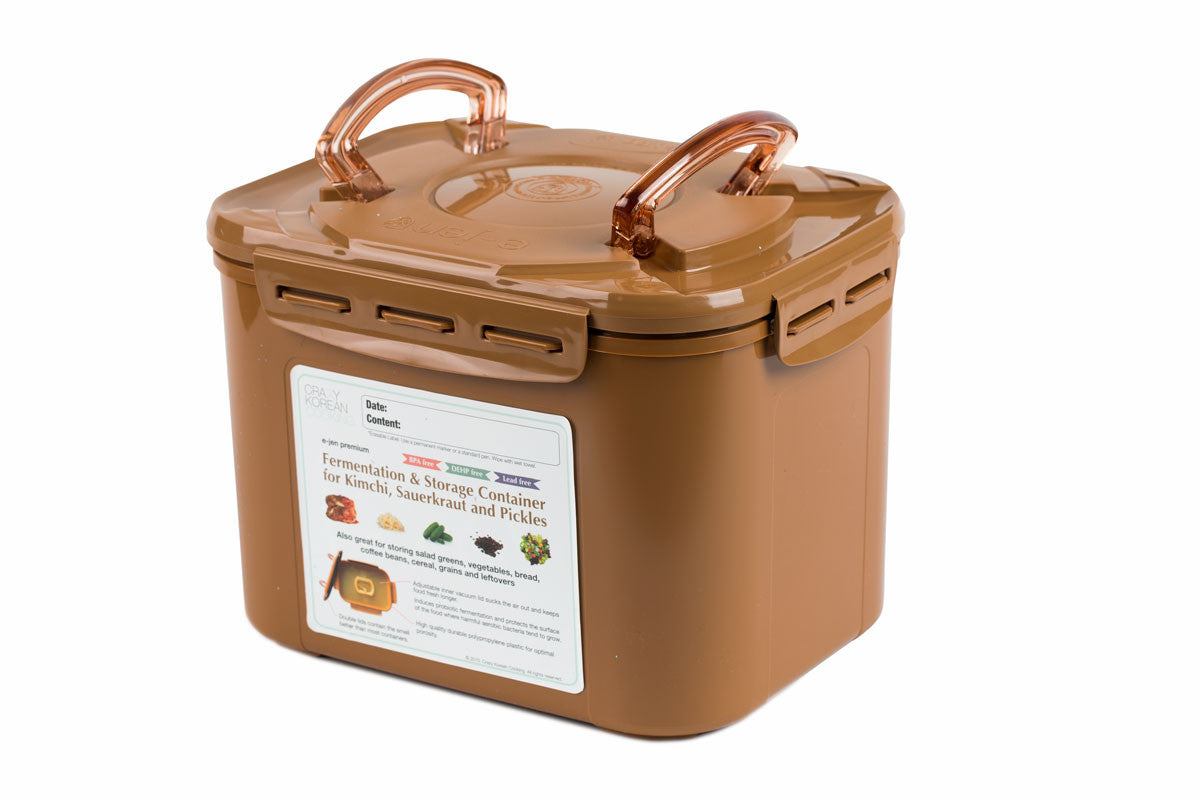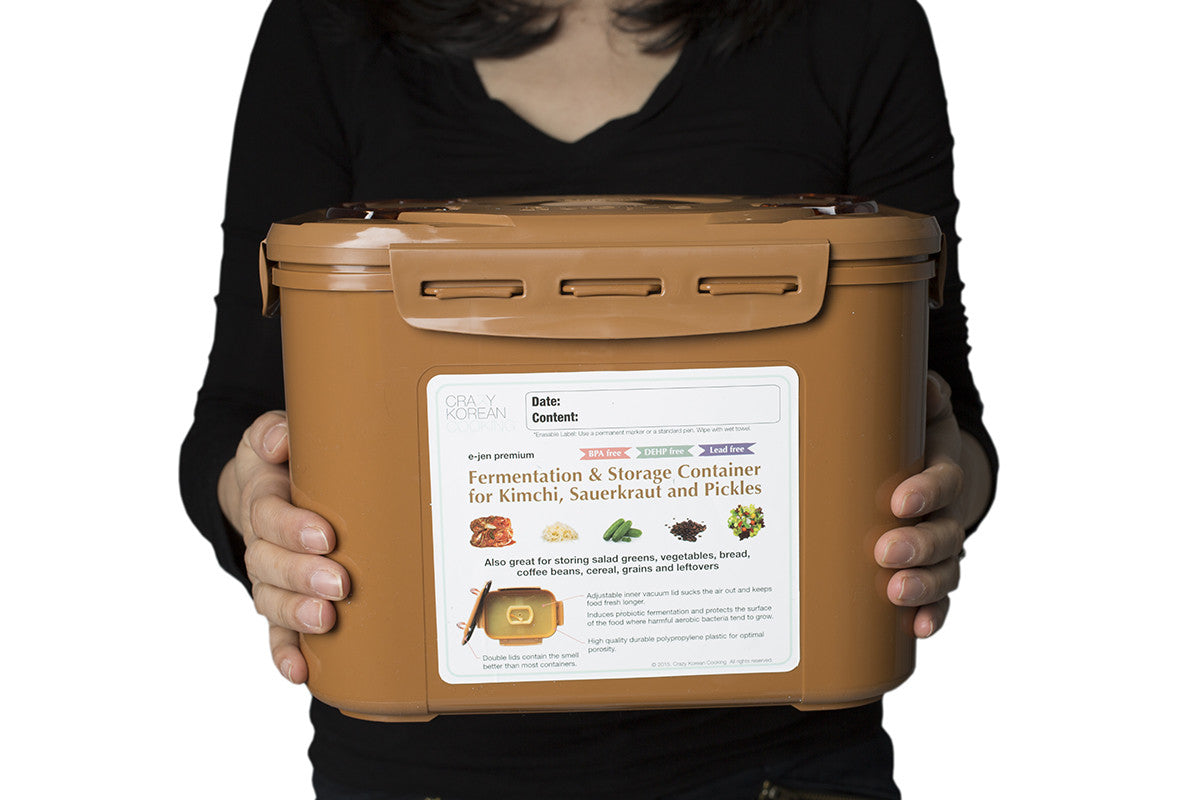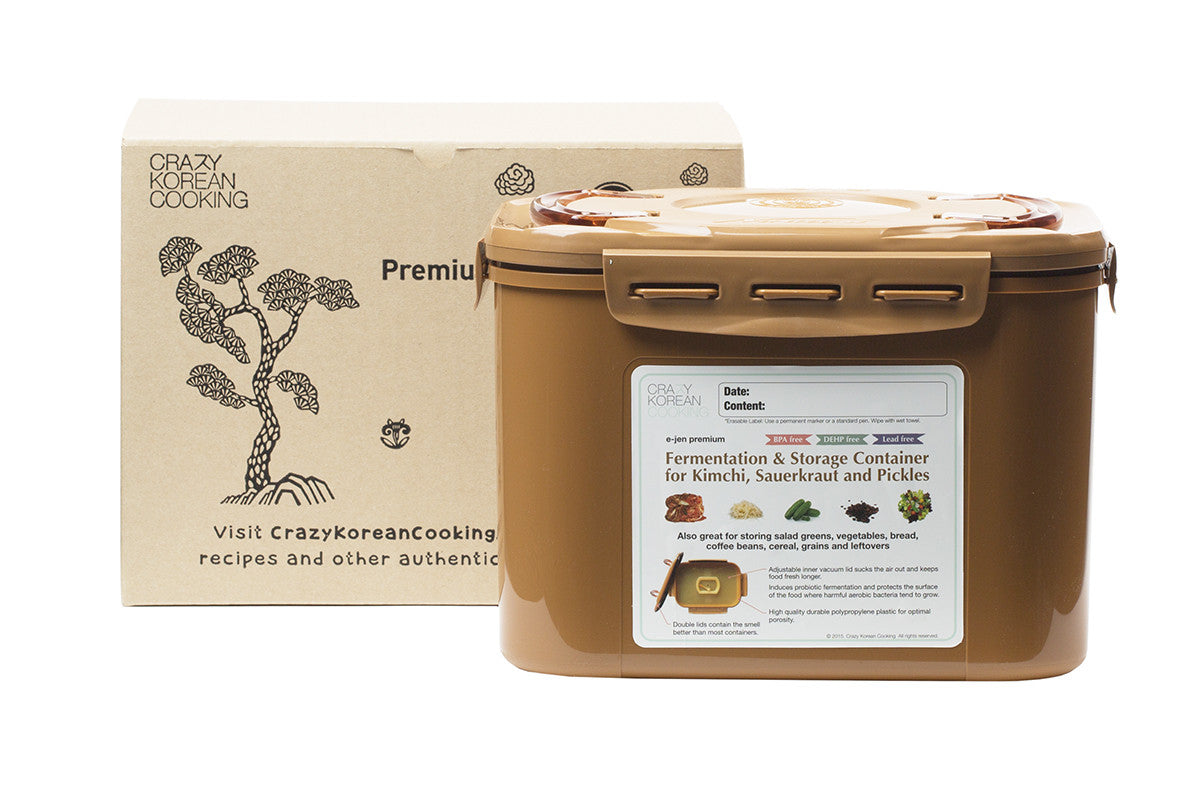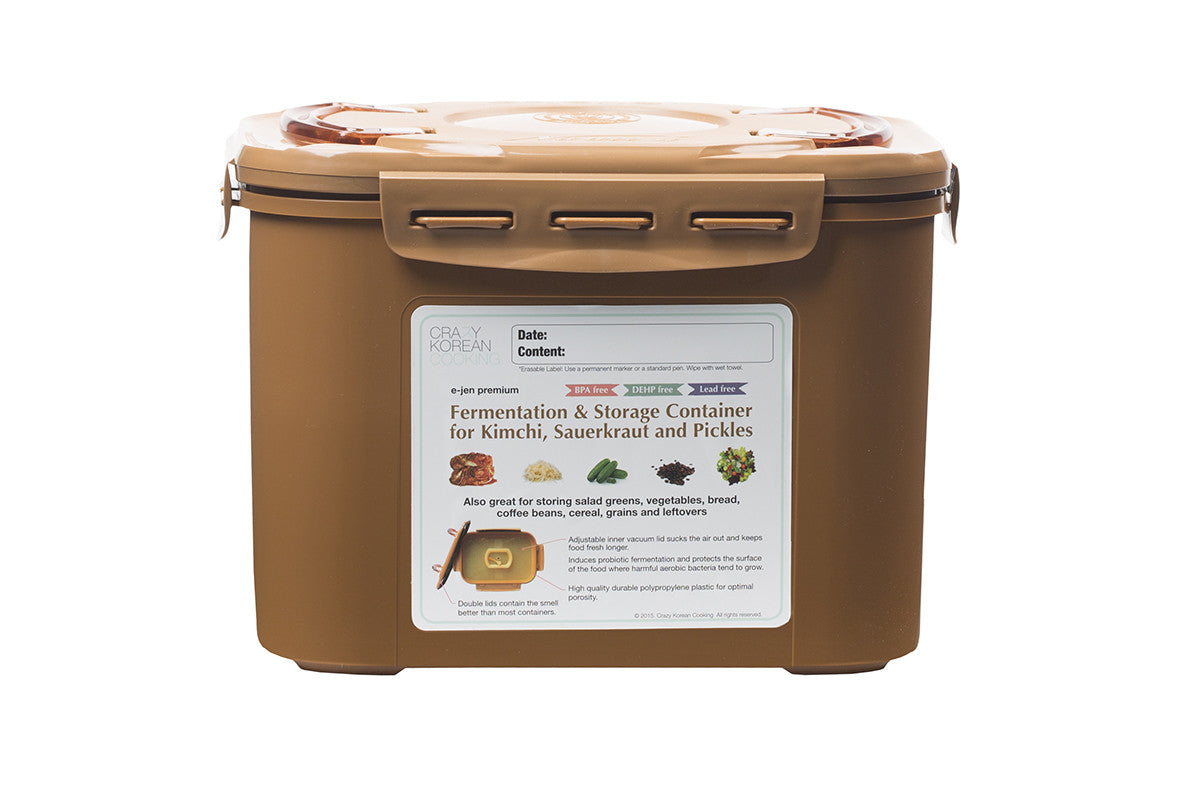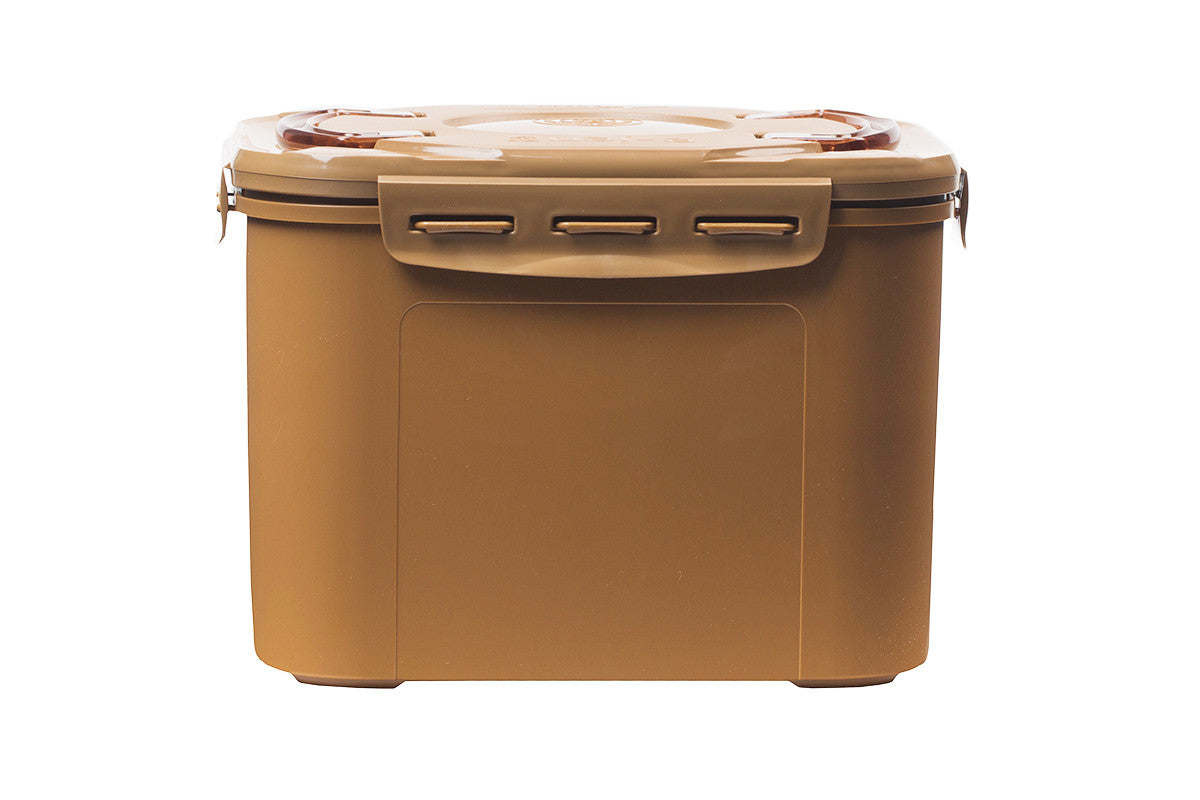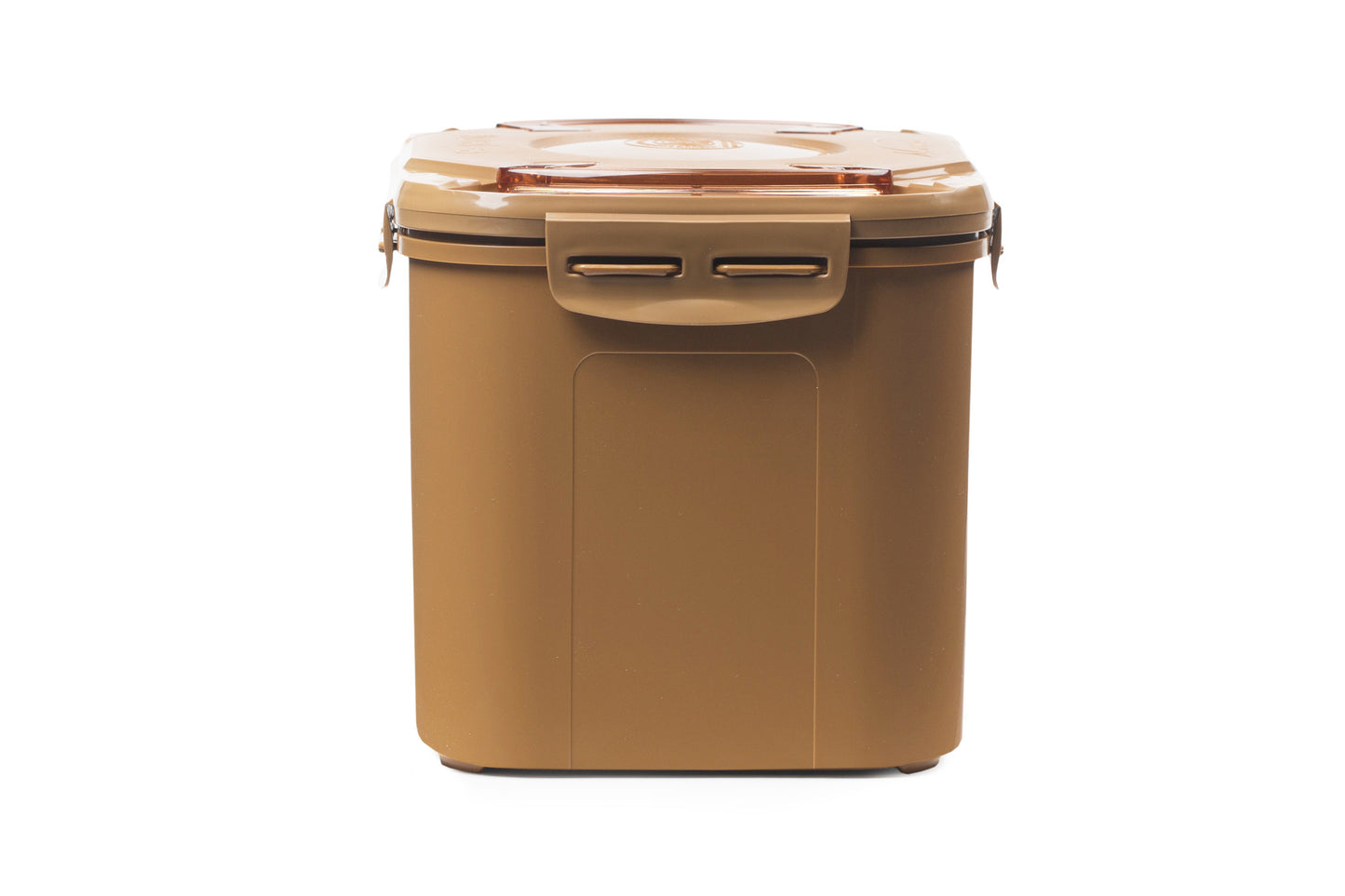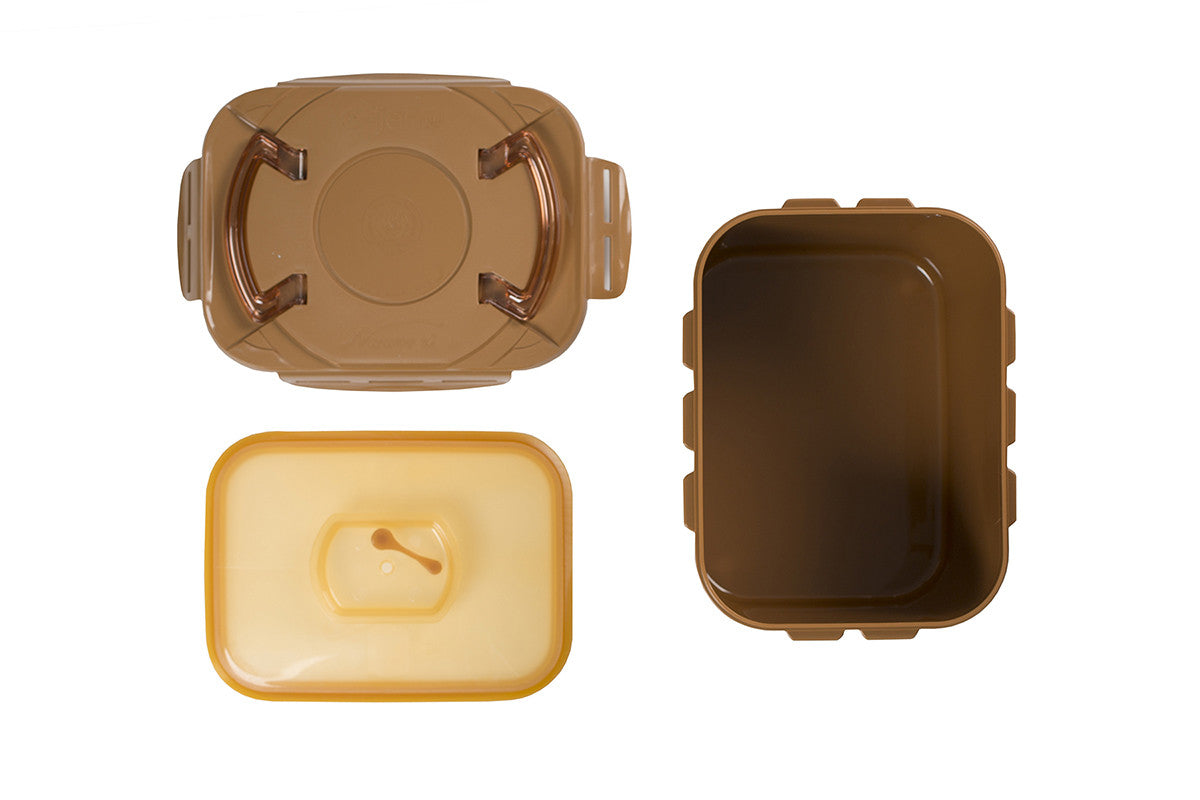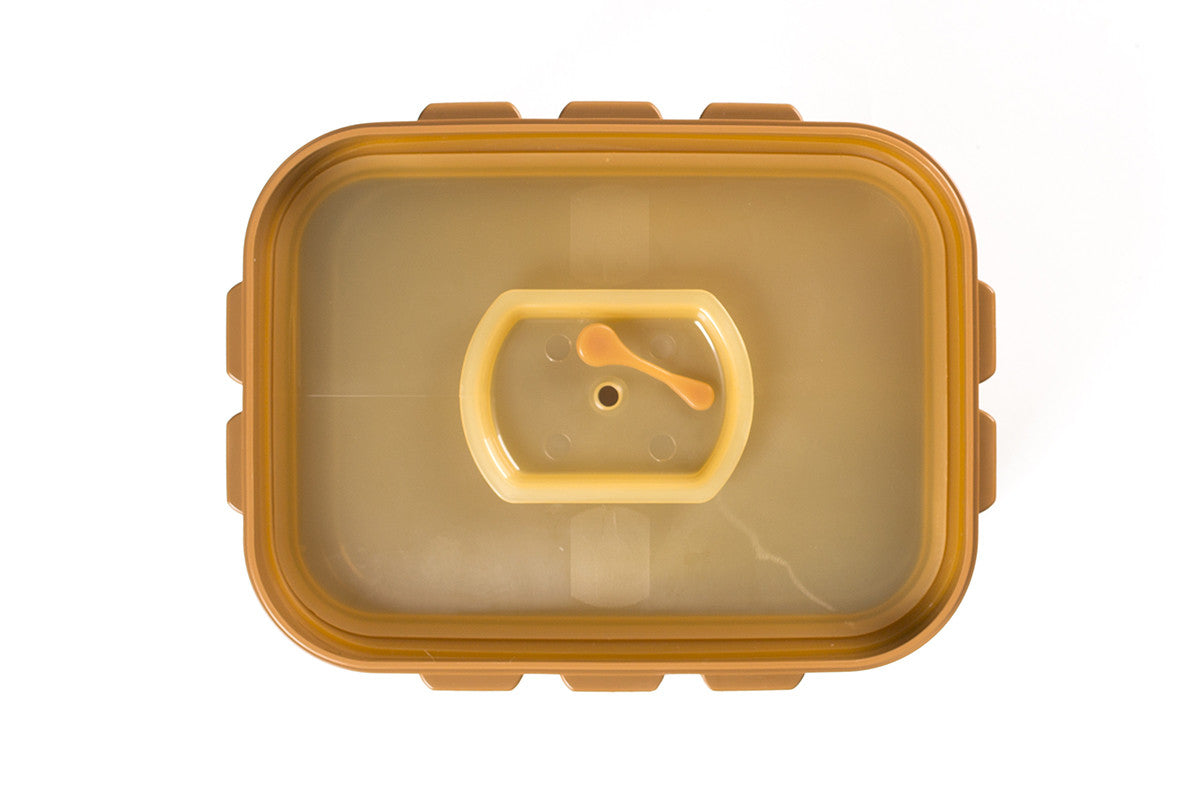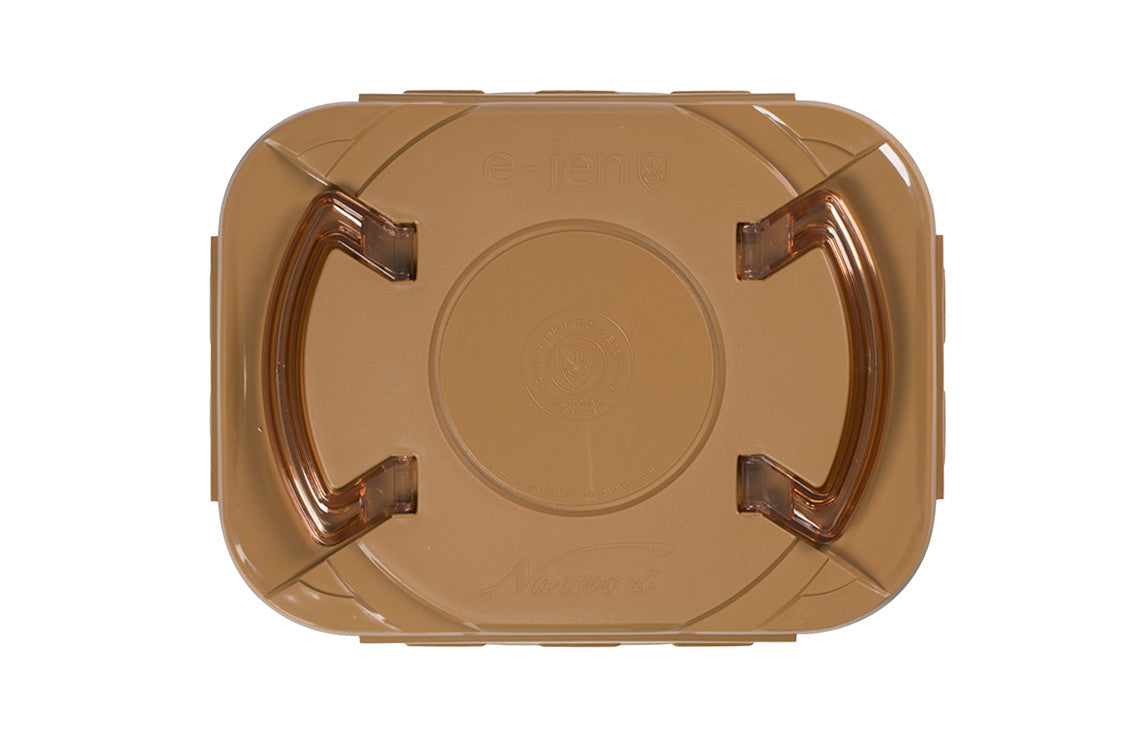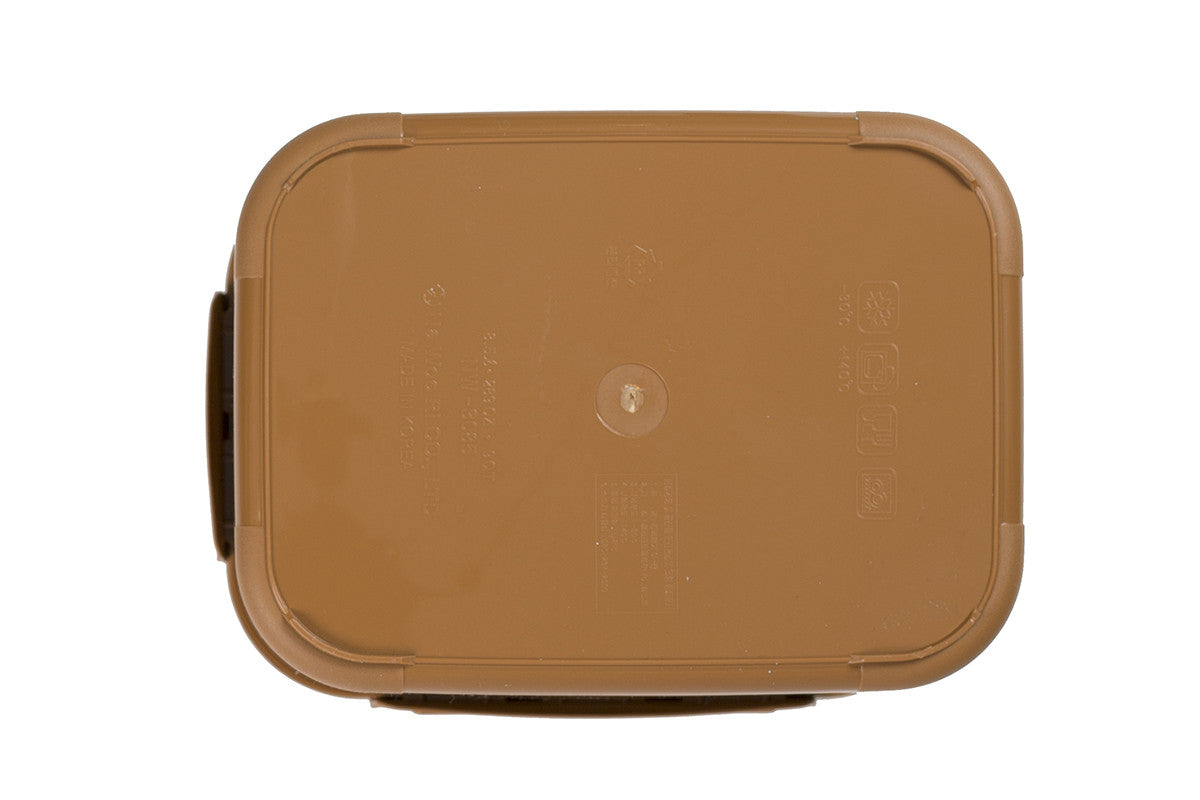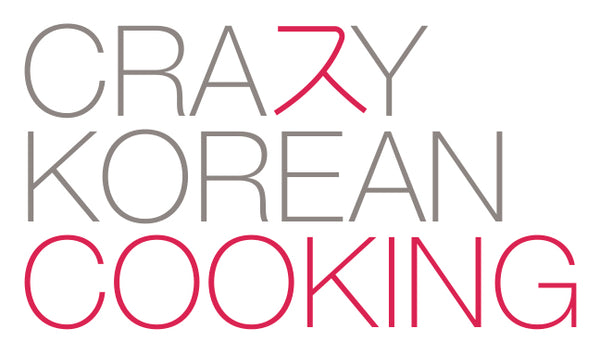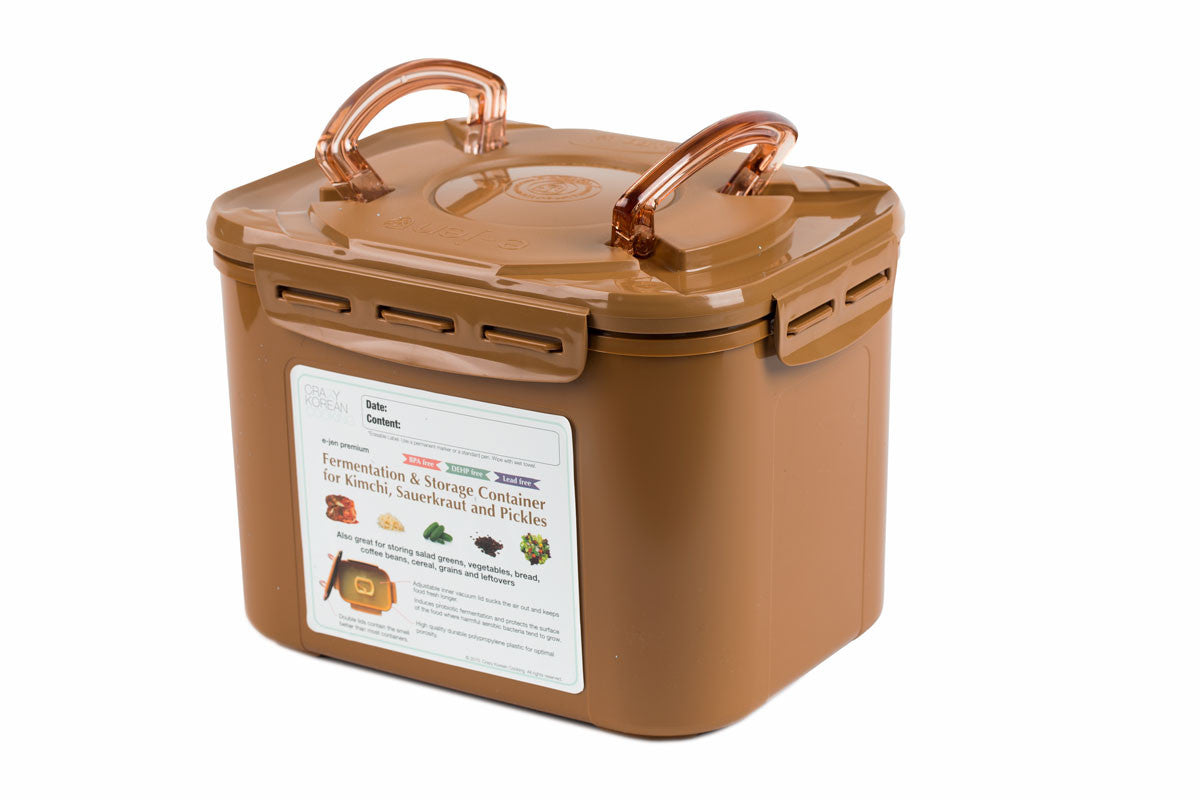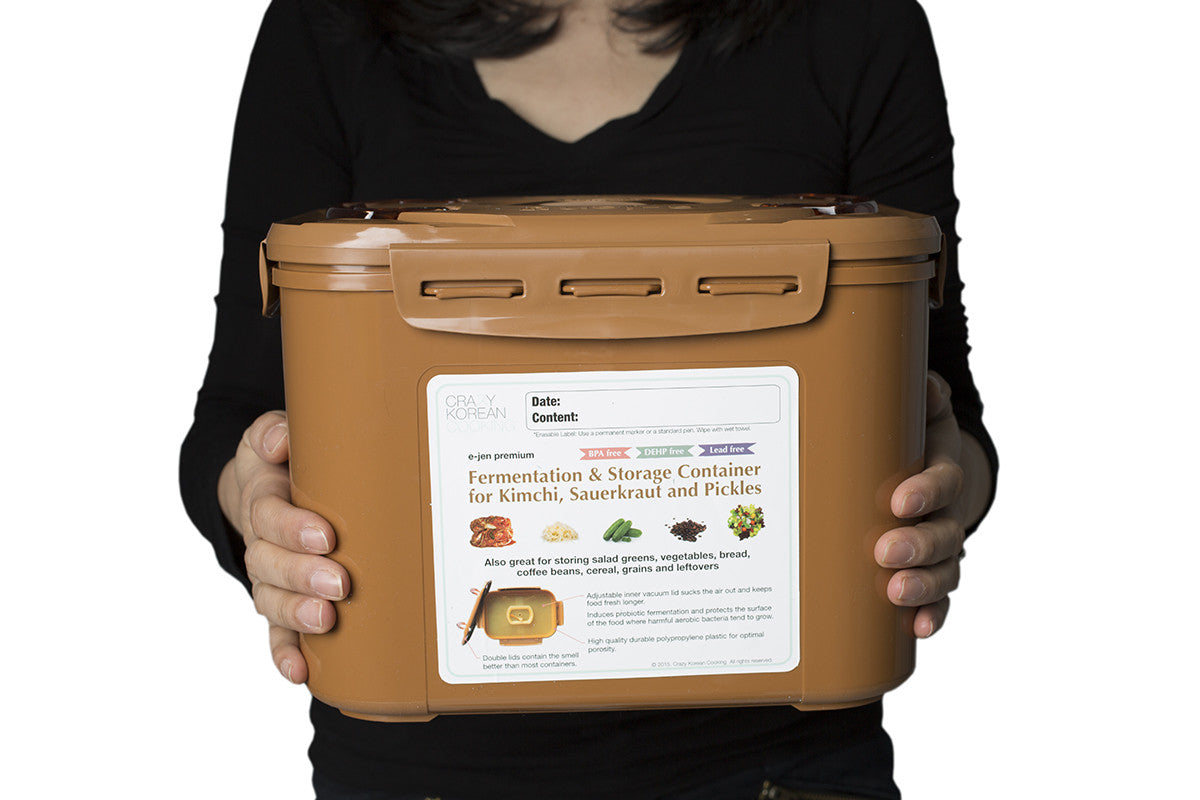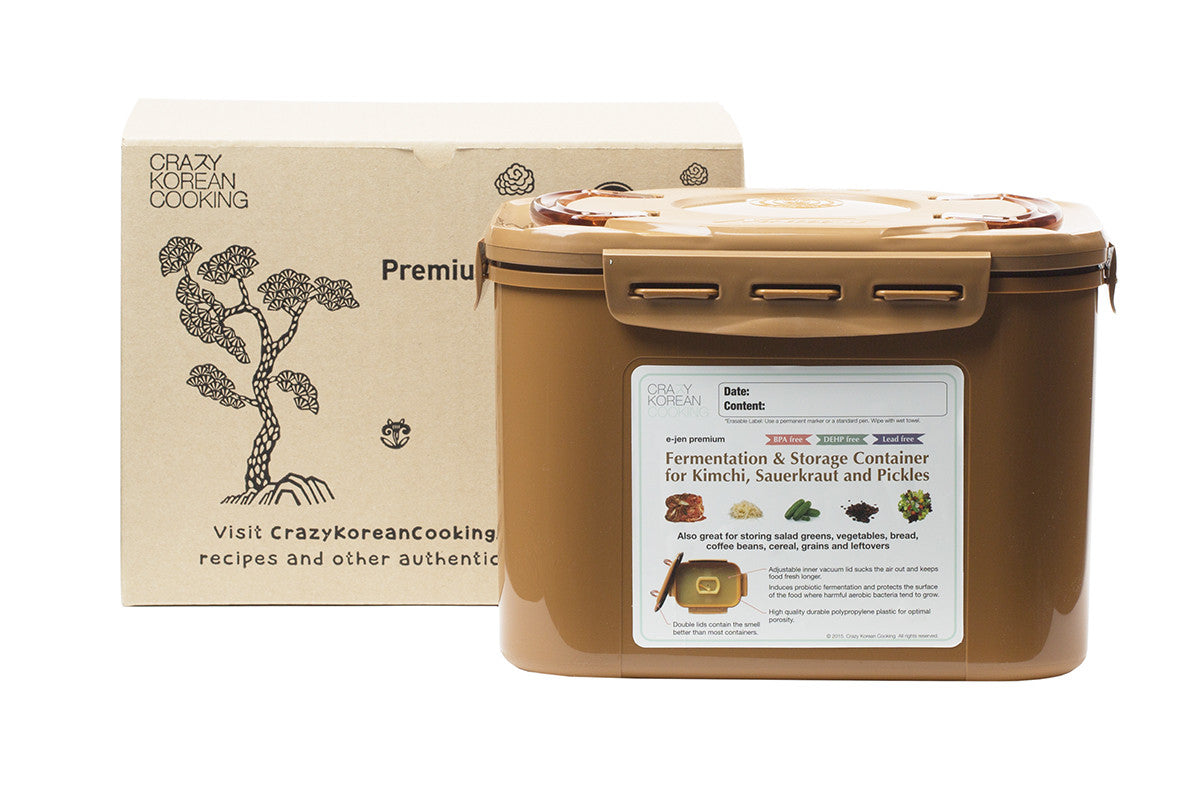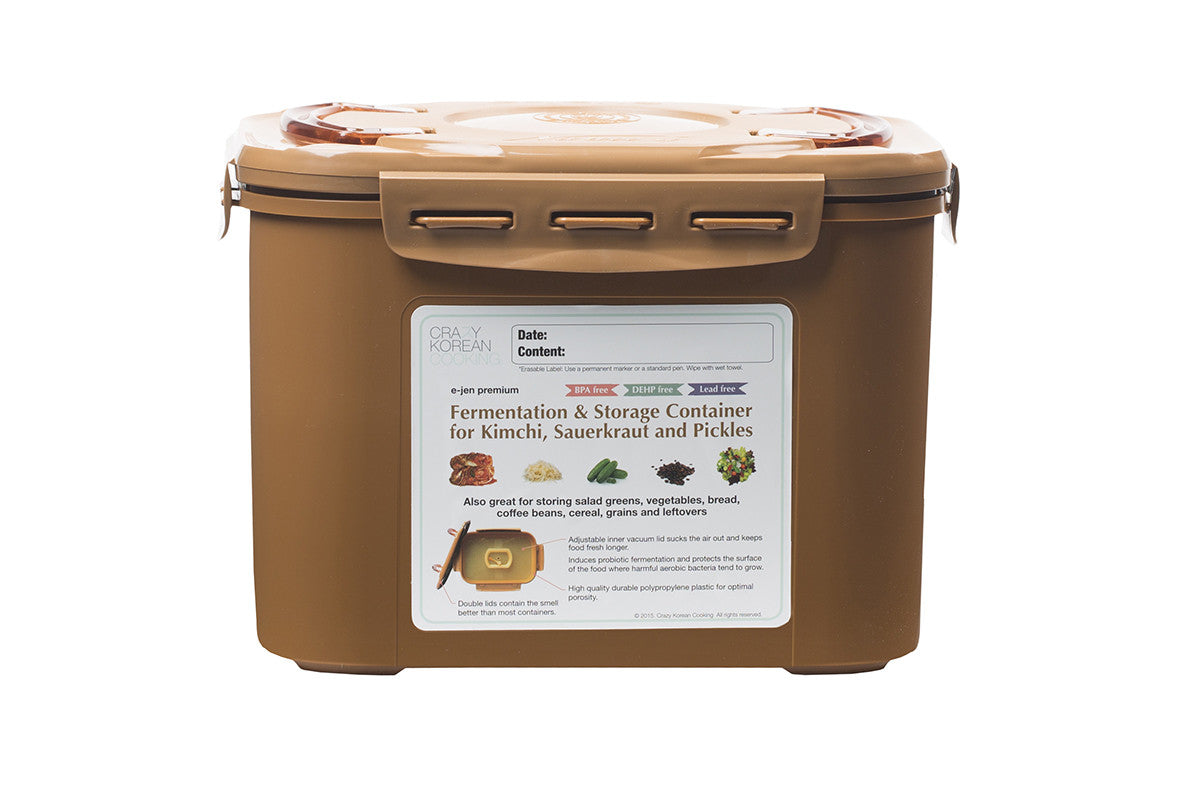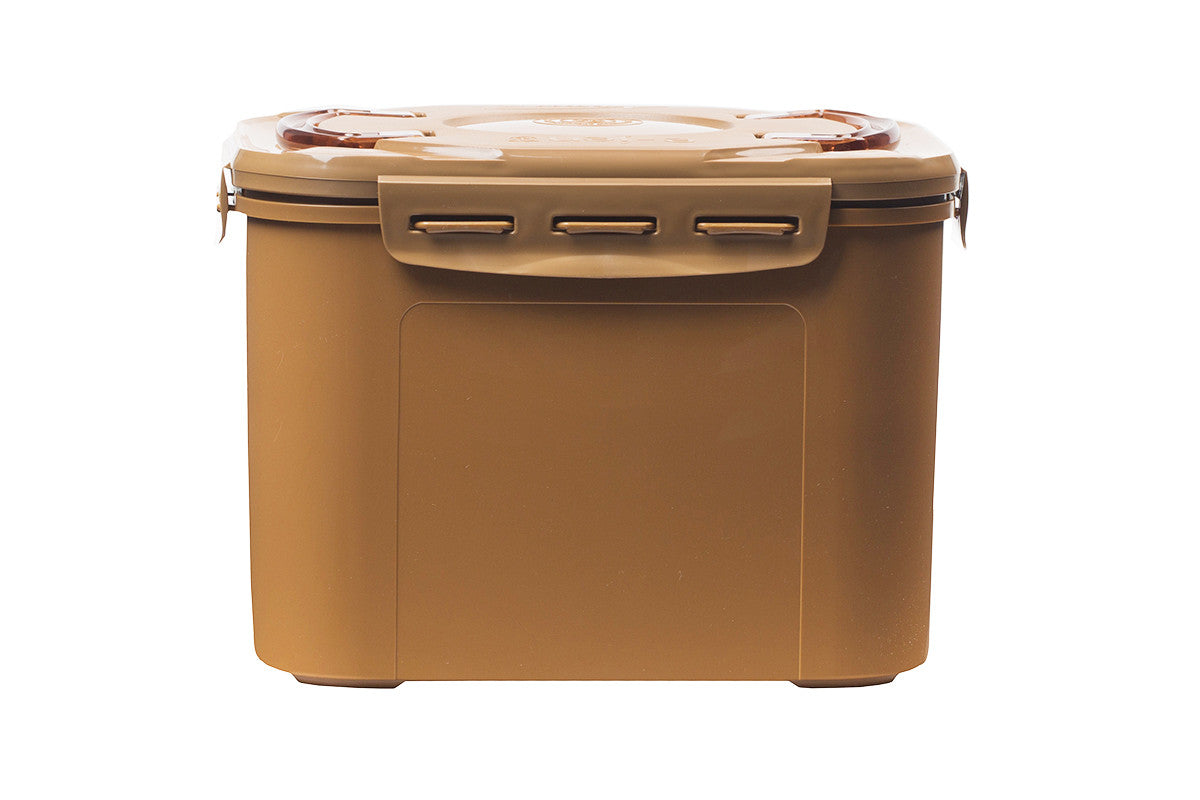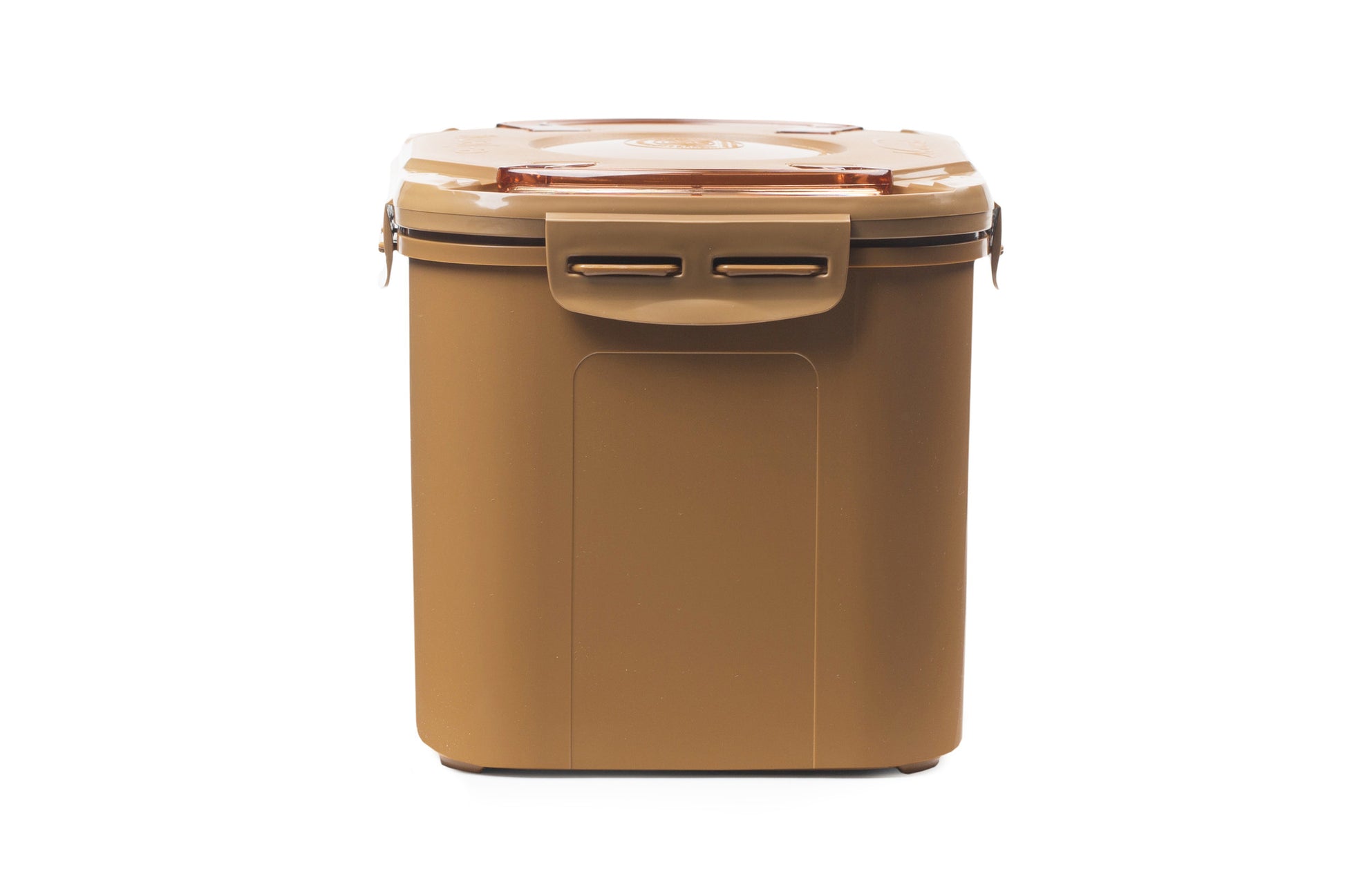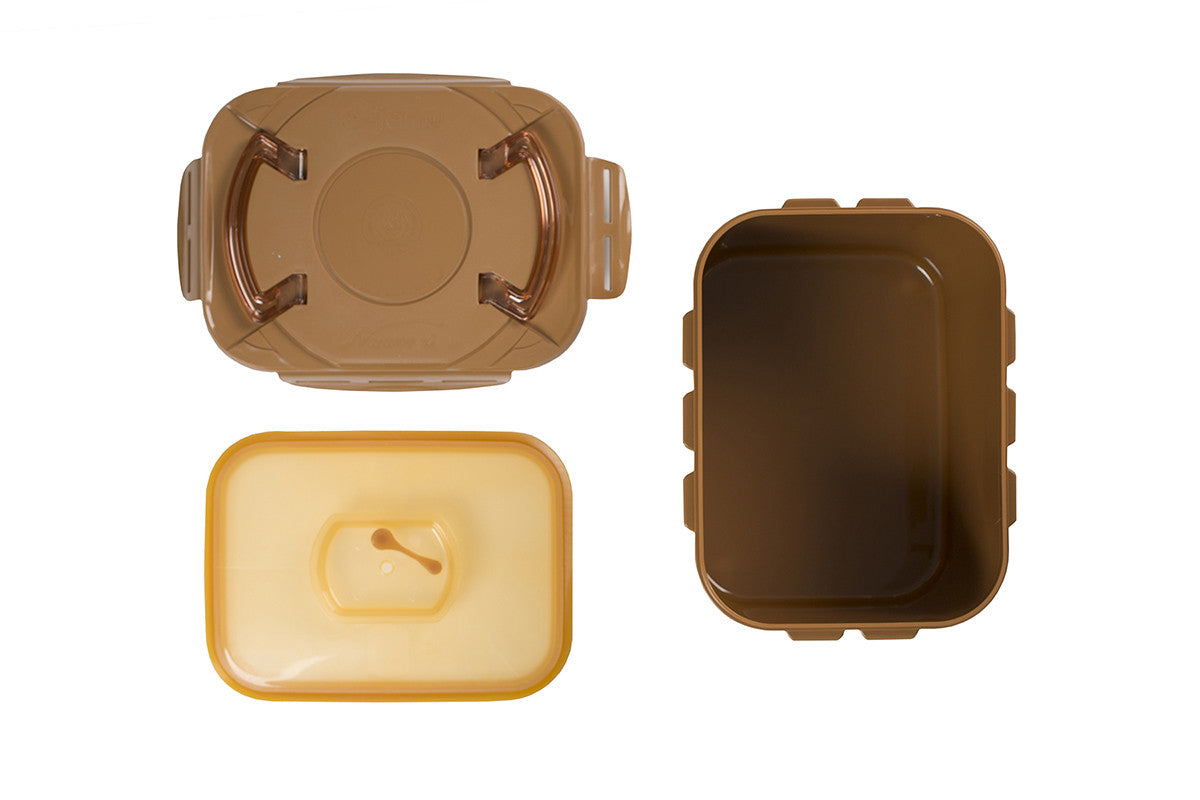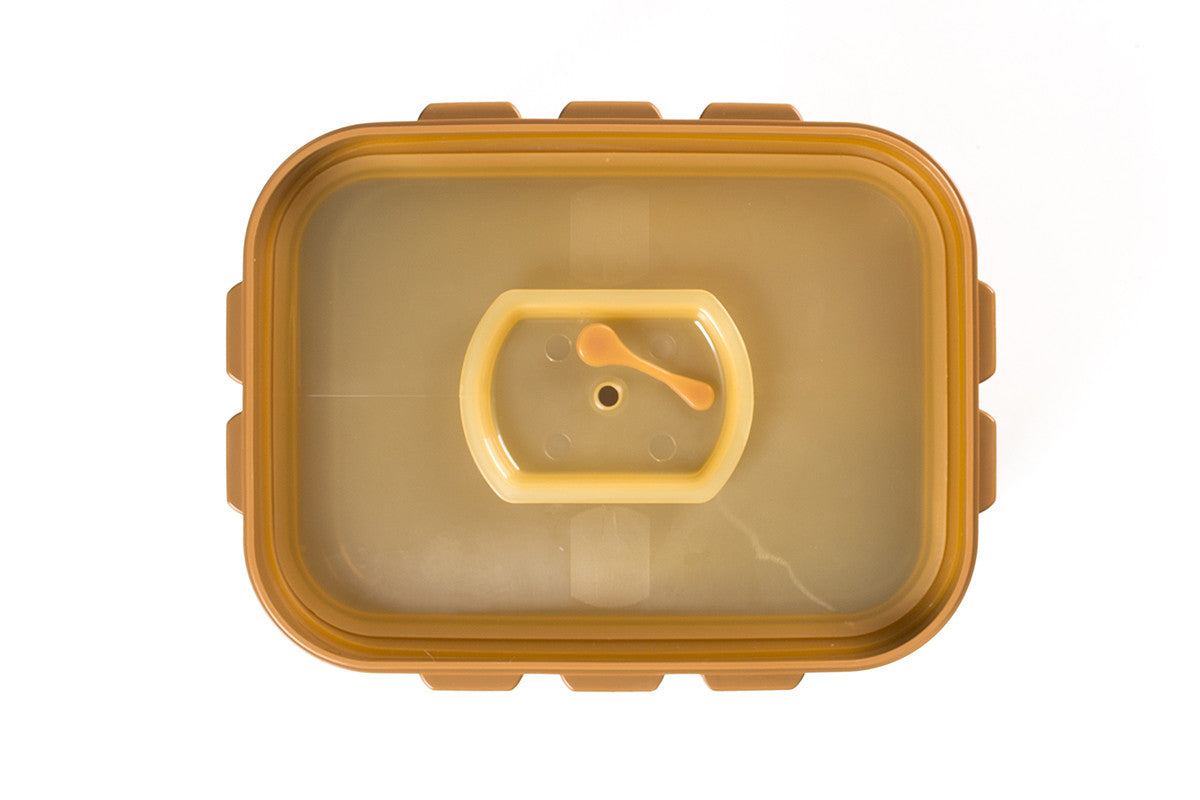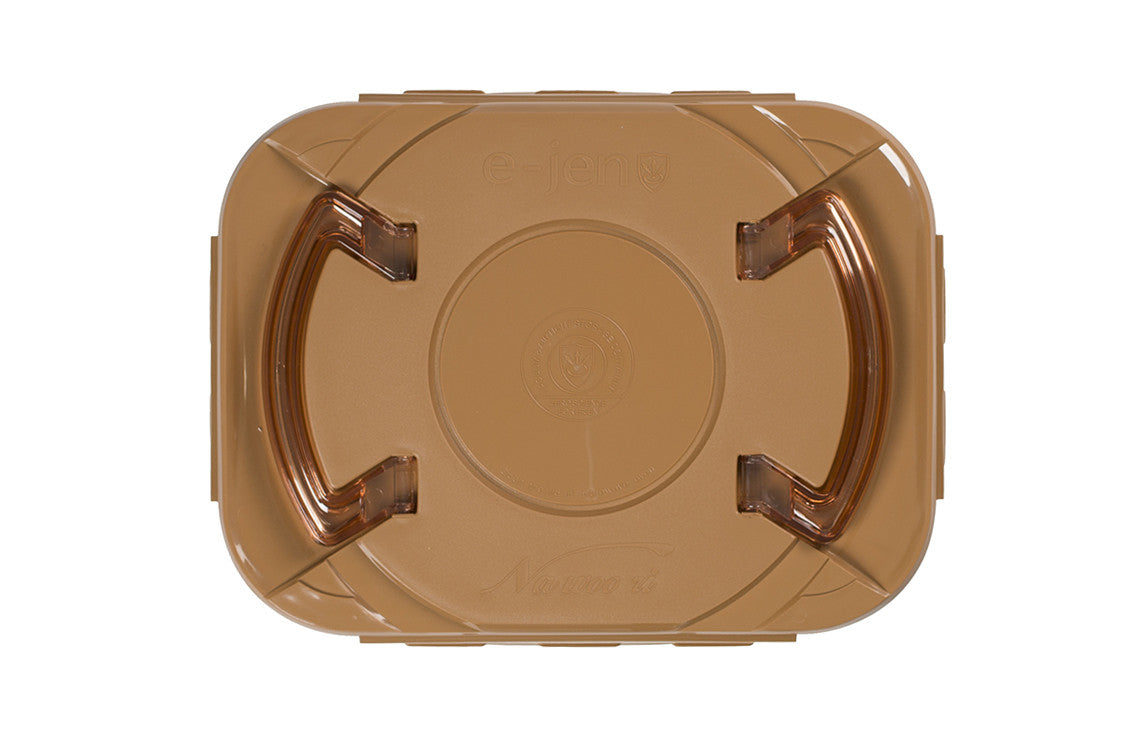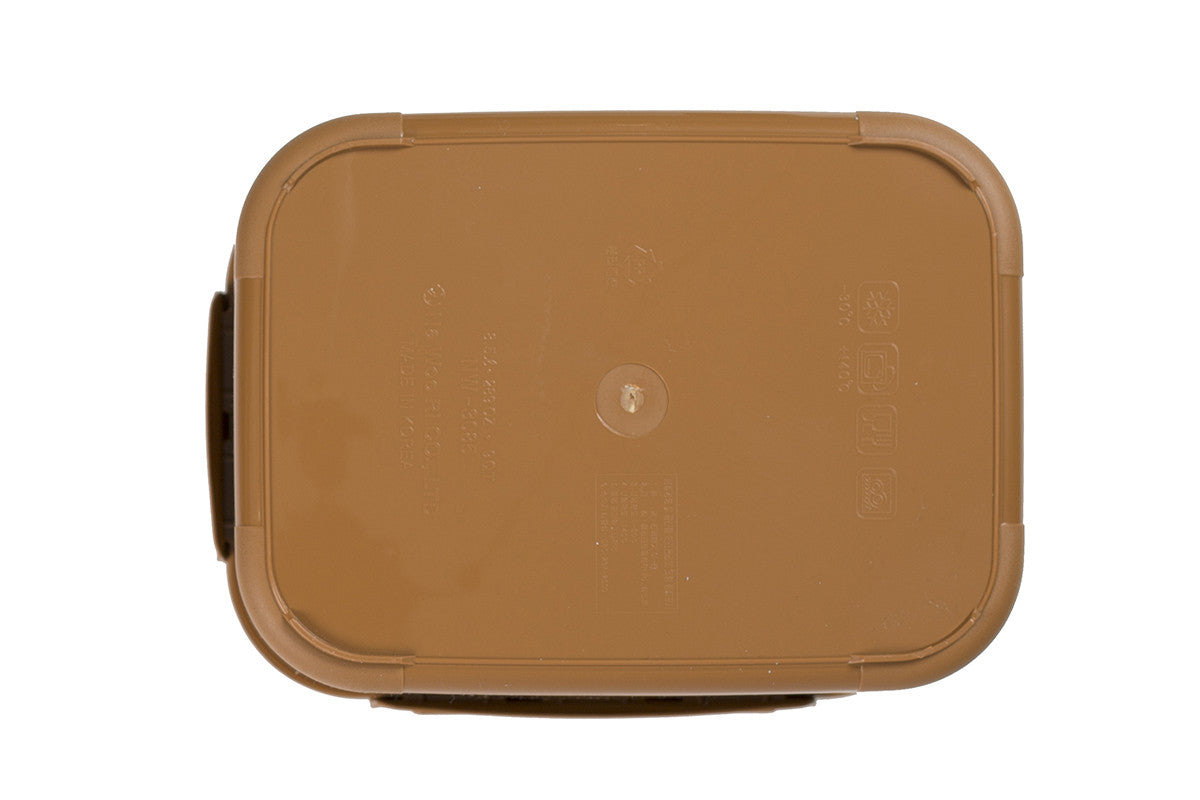Premium Kimchi Container, 2.2 Gal (8.5L) by Crazy Korean Cooking
Premium Kimchi Container, 2.2 Gal (8.5L) by Crazy Korean Cooking
Couldn't load pickup availability
BPA-Free | DEHP-Free | Lead-Free
- Perfect container for kimchi, sauerkraut and pickles combining the ancient Korean Onggi (breathing earthenware) principle with modern, easy-to-use technology
- Adjustable inner vacuum lid to minimize air inside, inducing anaerobic environment in which the beneficial bacteria thrive, and the crunchy texture and vibrant color are maximized,
- Inner lid protect the surface of the food where harmful aerobic bacteria tend to grow, and to prevent pickles in liquid from floating
- Double lids contain the smell better than most containers
- High quality polypropylene plastic mixed with 7-10% natural clay for optimal porosity
- All components made with FDA approved materials, free of BPA, DEHP and lead
- Dishwasher safe, easy handling/cleaning, fridge and freezer safe, can pour boiling water
- Microwave safe if the lids and the label on the front of the container are removed
- Also great for other foods requiring airtight storage (fresh vegetables, coffee beans, bread, cookies, cereals, grains, dry pet food)
Specifications
Specifications
Volume: 2.2 Gallon (8.5 L)
Dimensions (w"x d" x h") : 11.4 x 8.4 x 7.9
Materials: container (PP), inner lid (PP), outer lid (PP), rubber (silicon), handle (PC)
Color: sandy brown
Thermal Resistance: -22°F to 284°F (-30°C to 140°C)
Origin of product: Made in Korea.
Available Size: 0.4 Gallon (1.7L), 0.9 Gallon (3.4 L), 1.6 Gallon (6.4 L), 2.2 Gallon (8.5 L), 3.1 Gallon (12 L), 5.8 Gallon (22 L), 11.8 Gallon (45 L)
Also Known as: probiotic container, sauerkruat container, kimchi container, kimchi jar, gochujang container, gochujang jar, soybean paste jar, doenjang container, probiotic jar, fermentation crock, airlock, rice container, coffee container
Use & Care
Use & Care
Caution:
• Always have the valve open when pressing down or removing the inner vacuum plate. Move the inner lid down slowly to prevent any splash up through the valve opening.
• When using the container for kimchi, do not completely fill it up to the brim. Fermenting kimchi produces liquid which may overflow.
• When using in the microwave, remove both the outer and inner lids as well as the label on the front of the container.
Closing the container:
Place food in the container.
Open the valve in the middle of the inner vacuum lid by pulling the rubber plug.
Slowly push down the inner lid until it touches the surface of the food. *For water kimchi (mool kimchi) or pickles, push down on the lid to the point where the liquid is right to the level of the opening, but not coming through.
Close the valve with plug.
Close the outer lid.
Snap the locks on all four sides of the outer lid to secure. (*Round containers do not have snap locks.)
Opening the container:
Open the outer lid.
Open the valve.
Slowly pull the inner lid by the raised handle in the middle so that it’s slightly tilted, then continue to pull out slowly.
*5.8 gallon and 11.8 gallon round containers feature a center cap on the inner vacuum lid. You can simply remove the center cap to scoop out food instead of pulling out the whole inner vacuum lid.
During fermentation:
Most of the time the inner lid and the closed valve can be left as they are during fermentation.
However, rapid fermentation may produce excessive gas and push the inner vacuum lid up. In this case, open the valve and push the inner vacuum lid down and close the valve again. If fermentation is excessive, leave the valve open until fermentation slows down.
Fermentation duration for kimchi:
Fermentation time depends on temperature and the amount of salt in the kimchi. A lower temperature and smaller amount of salt will slow the fermentation process. They say slowly fermenting kimchi at 5-10°C (41-50°F) for 15-20 days results in the tastiest kimchi. For faster fermentation, leave the kimchi out in room temperature for 2-3 days. The best way is to leave it out and taste it every day. When it reaches your preferred taste, put it in the refrigerator. If you make a large amount, you can leave some out in room temperature and store the rest in the fridge right away. Then, take more out later for more fermentation as needed. The duration of fermentation also depends on personal preference. The sourness of kimchi increases as fermentation progresses.
More on Product
More on Product
The Crazy Korean Cooking Kimchi container is widely loved in Korea as the best modern container for fermenting and storing kimchi and jang (Korean fermented sauces). It is also great for other foods requiring airtight storage, such as fresh vegetables, coffee beans, bread, seaweed, cookies, cereals, grains and even dry pet foods.
The Kimchi container combines the ancient Korean Onggi (breathing earthenware) principle with modern, easy-to-use technology.
Onggi, Korean earthenware, dates back to 57 BC when it was first used to store various foods. It is referred to as the “breathing pot” because of its unique porosity, and it is known as an excellent vessel for fermented foods like kimchi, pickles and jang (Korean fermented sauces). Although Onggi is amazing in many ways, it is difficult to use in a modern home environment because it is very heavy, difficult to clean and awkward to keep in the fridge. The Crazy Korean Cooking container was developed to solve all those problems, while maintaining the age-old ingenuity and usefulness of Onggi.
The container is made from high quality durable polypropylene plastic mixed with 7-10% natural clay for optimal porosity (*clay content only for sandy brown colored containers). Like Onggi, the container has very fine pores which allow minimal air flow. This keeps the food fresh while preventing aerobic bacteria from thriving.
The simple yet brilliant design of the inner vacuum lid allows easy adjustment of the lid position according to the level of food. So regardless of the amount of food, the container induces an anaerobic environment in which the beneficial bacteria (lactic acid producing bacteria) thrive and the crunchy texture and vibrant color are maximized. The carbon dioxide released by lactic acid producing bacteria is absorbed back to the kimchi juice, creating a more refreshing taste.
In the old days, Koreans used large outer leaves of napa cabbage to cover the surface of kimchi to prevent molds. Today many Koreans use cling wrap instead. For kimchi with liquid, the old practice was to use large flat rocks to keep the vegetables in the liquid. The inner vacuum lid of the Crazy Korean Cooking container now does the job of the leaves and the rocks, protecting the surface of the food where harmful aerobic bacteria tend to grow, and preventing pickles in the liquid from floating.
Although the smell of kimchi is the result of healthy bacteria producing lactic acid, it can be quite powerful. The Crazy Korean Cooking container’s double lids contain the smell better than most containers, preventing the smell from filling the kitchen or the fridge.
The Crazy Korean Cooking container is easy to handle and clean. It fits well in the fridge or freezer. It is dishwasher safe and heat/cold resistant (can handle hot water). You can use it in the microwave without the lids. It is free of BPA, DEHP and lead. All components are made with materials that are FDA approved.
Behind Story
The Crazy Korean Cooking container was invented by Sung Chul Hong, an engineer with a creative spirit and passion. During his early teen years, Mr. Hong moved to a city from the countryside for better education. Like many Korean students in the early 70’s who lived away from home, he always had a few jars of homemade jang (Korean fermented sauces) his mom made. He noticed that after a while molds often developed on the surface of the jang. He didn’t want his mother’s precious food to go to waste. So during his college years he started covering the surface with a plastic sheet and found it to be effective in preventing molds. (Back then, using plastic wraps for jang was not a common practice.) He even told his mother about it, and she started doing the same and loved it.
After he graduated and then following a few business experiences, he remembered his inspiration regarding jang and was determined to develop a container that was perfect for it. With the help of his food scientist friends, and after two years of research and development, he created a patented container that combined Korean ancient wisdom with modern technology. Not surprisingly, the container gained popularity among many Koreans, who then began using it for many other things beyond kimchi and jang. Mr. Hong has found fulfillment in the impact of his work on the lives of many Korean mothers, among others. And he hopes to continue doing so as his innovative ideas have not ceased to this day.
Kimchi Recipe:
Share
